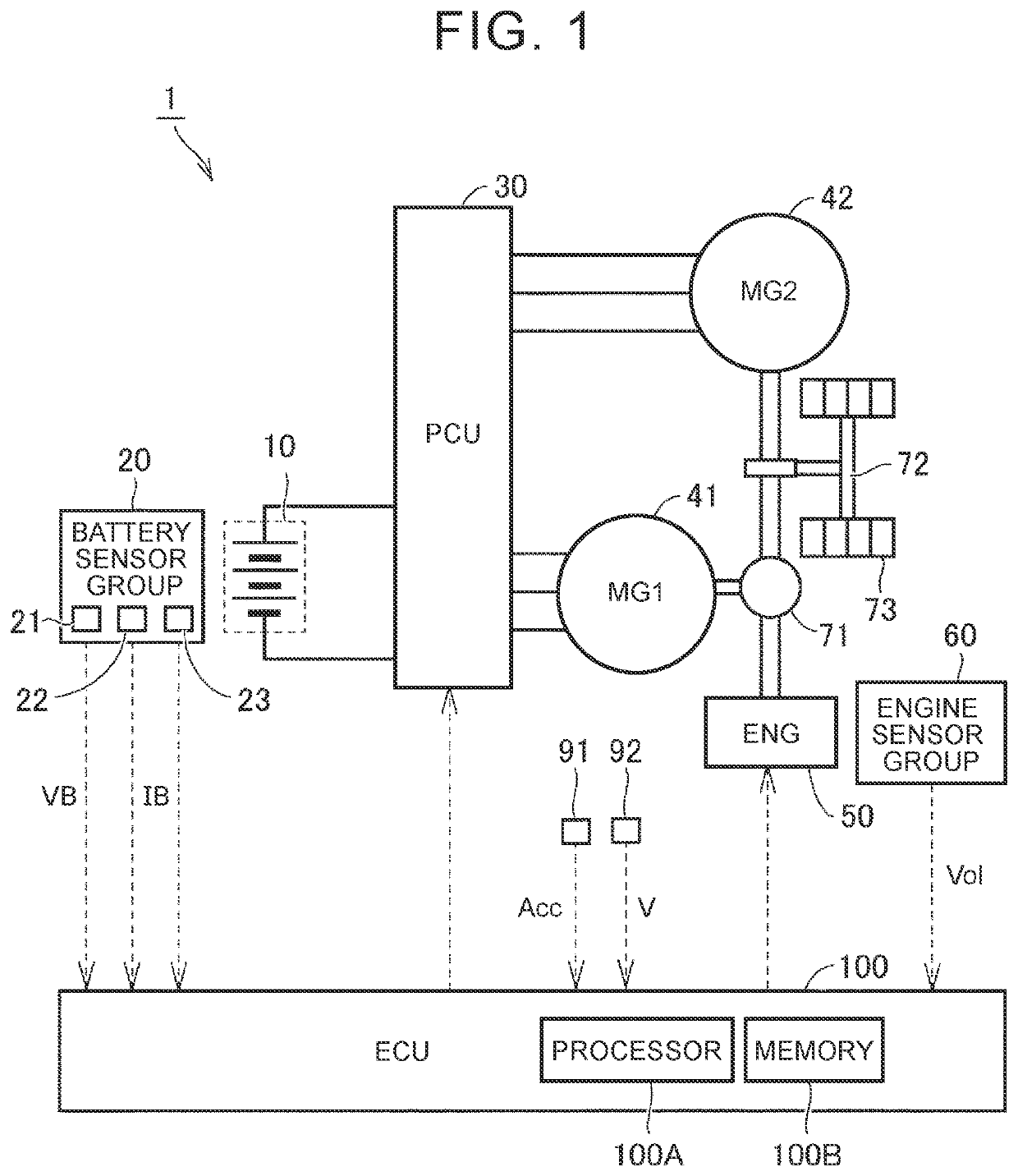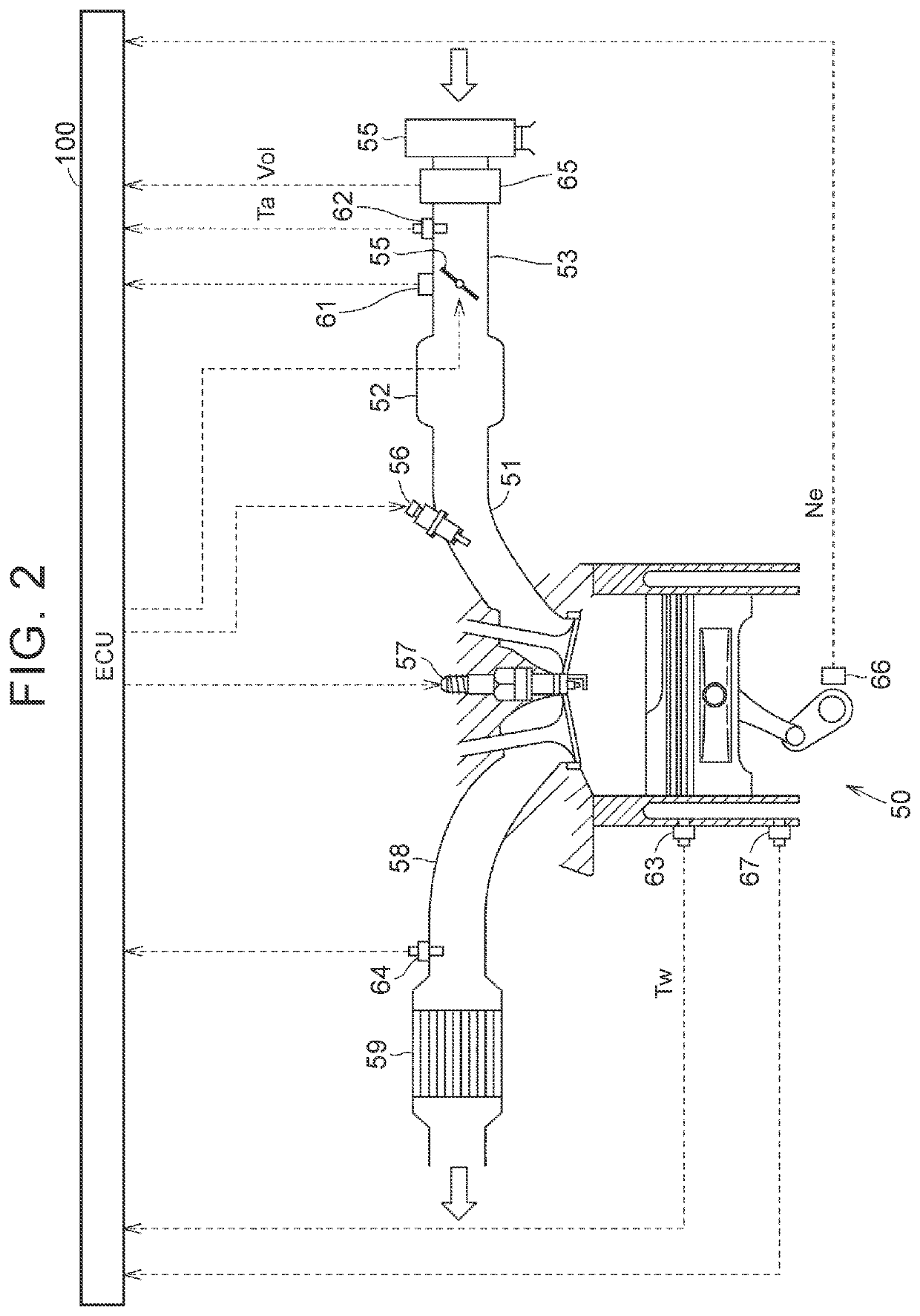Hybrid vehicle
a hybrid vehicle and intake air technology, applied in hybrid vehicles, electrical control, speed sensing governors, etc., can solve the problem of few opportunities to learn the intake air amount, achieve low torque, increase learning opportunities, and reduce over-discharging of batteries
- Summary
- Abstract
- Description
- Claims
- Application Information
AI Technical Summary
Benefits of technology
Problems solved by technology
Method used
Image
Examples
first embodiment
[0028]Vehicle Configuration
[0029]FIG. 1 is a diagram schematically showing an overall configuration of a hybrid vehicle according to a first embodiment. With reference to FIG. 1, a vehicle 1 is a hybrid vehicle, and includes a battery 10, a battery sensor group 20, a power control unit (PCU) 30, a first motor generator (MG) 41, a second motor generator 42, an engine 50, an engine sensor group 60, a power split device 71, a drive shaft 72, drive wheels 73, an accelerator pedal position sensor 91, a vehicle speed sensor 92, and an electronic control unit (ECU) 100.
[0030]The battery 10 is an assembled battery composed of a plurality of cells. Each cell is a secondary battery such as a lithium ion battery or a nickel metal hydride battery. The battery 10 stores electric power for driving the first motor generator 41 and the second motor generator 42, and supplies the electric power to the first motor generator 41 and the second motor generator 42 via the PCU 30. Further, when the first ...
second embodiment
[0090]In the first embodiment, an example of protecting the battery 10 from over-charging has been described. In a second embodiment, an example of protecting the battery 10 from over-discharging will be described. The configuration of the vehicle according to the second embodiment is the same as the configuration of the vehicle 1 according to the first embodiment. Therefore, the description will not be repeated.
[0091]FIG. 7 is a diagram for explaining a relationship between the SOC of the battery 10 and the ISC learning according to the second embodiment. With reference to FIG. 7, also in the second embodiment, two threshold values (TH3, TH4) are set within the control range of the SOC of the battery 10. A third threshold value TH3 is an SOC lower than the SOC control center M. A fourth threshold value TH4 is an SOC that is further lower than the third threshold value TH3. As an example, the third threshold value TH3=50% and the fourth threshold value TH4=40%.
[0092]Hereinafter, it ...
PUM
 Login to View More
Login to View More Abstract
Description
Claims
Application Information
 Login to View More
Login to View More - R&D
- Intellectual Property
- Life Sciences
- Materials
- Tech Scout
- Unparalleled Data Quality
- Higher Quality Content
- 60% Fewer Hallucinations
Browse by: Latest US Patents, China's latest patents, Technical Efficacy Thesaurus, Application Domain, Technology Topic, Popular Technical Reports.
© 2025 PatSnap. All rights reserved.Legal|Privacy policy|Modern Slavery Act Transparency Statement|Sitemap|About US| Contact US: help@patsnap.com



